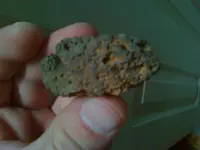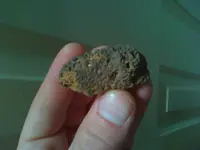I took this quote from Wikipedia too help us see the components:
"Some of these textures are micritic, pelleted, intraclastic, peloidal,
oolitic,
pisolitic, and
stromatolitic.[SUP]
[1][/SUP] In low-grade iron formations, there are different dominant minerals dependent on the different types of
facies. The dominant minerals in the
oxide facies are magnetite and hematite. The dominant minerals in the
silicate facies are
greenalite,
minnesotaite, and
glauconite. The dominant mineral in the
carbonate facies is siderite. The dominant mineral in the
sulfide facies is
pyrite. Most iron formations are deformed or metamorphosed simply due to their incredibly old age, but they still retain their unique distinctive chemical composition; even at high metamorphic grades. The higher the grade, the more metamorphosed it is. Low grade rocks may only be compacted while high grade rocks often can not be identified. They often contain a mixture of
banded iron formations and granular iron formations. Iron formations can be divided into subdivisions known as: banded iron formations (BIFs) and granular iron formations (GIFs).[SUP]
[3][/SUP]


Bog ore
The above classification scheme is the most commonly used and accepted, though sometimes an older system is used which
divides iron-rich sedimentary rocks into three categories: bog iron deposits,
ironstones, and
iron formations. A bog-iron deposit is iron that formed in a
bog or
swamp through the process of
oxidation."
















